
LUDLUM MODEL 42-38 WENDI-2
WIDE ENERGY NEUTRON DETECTOR
November 2018
Serial Number PR161245 and Succeeding
Serial Numbers

LUDLUM MODEL 42-38 WENDI-2
WIDE ENERGY NEUTRON DETECTOR
November 2018
Serial Number PR161245 and Succeeding
Serial Numbers


STATEMENT OF WARRANTY
Ludlum Measurements, Inc. warrants the products covered in this manual to be free of
defects due to workmanship, material, and design for a period of twelve months from
the date of delivery. The calibration of a product is warranted to be within its specified
accuracy limits at the time of shipment. In the event of instrument failure, notify
Ludlum Measurements to determine if repair, recalibration, or replacement is required.
This warranty excludes the replacement of photomultiplier tubes, G-M and proportional
tubes, and scintillation crystals which are broken due to excessive physical abuse or
used for purposes other than intended.
There are no warranties, express or implied, including without limitation any implied
warranty of merchantability or fitness, which extend beyond the description of the face
there of. If the product does not perform as warranted herein, purchaser’s sole remedy
shall be repair or replacement, at the option of Ludlum Measurements. In no event will
Ludlum Measurements be liable for damages, lost revenue, lost wages, or any other
incidental or consequential damages, arising from the purchase, use, or inability to use
product.
RETURN OF GOODS TO MANUFACTURER
If equipment needs to be returned to Ludlum Measurements, Inc. for repair or calibration, please send
to the address below. All shipments should include documentation containing return shipping address,
customer name, telephone number, description of service requested, and all other necessary
information. Your cooperation will expedite the return of your equipment.
LUDLUM MEASUREMENTS, INC.
ATTN: REPAIR DEPARTMENT
501 OAK STREET
SWEETWATER, TX 79556
800-622-0828 325-235-5494
FAX 325-235-4672


Model 42-38 WENDI-2
TABLE OF CONTENTS
1. GENERAL ................................................................................................................................... 1
2. SPECIFICATIONS ...................................................................................................................... 1
3. CALIBRATION .......................................................................................................................... 2
3.1 Determining Operating Voltage .................................................................................. 2
3.2 Gamma Rejection Check ............................................................................................. 2
3.3 Conversion Chart .......................................................................................................... 3
4. PARTS LIST ................................................................................................................................ 3
Model 42-38 Neutron Detector ............................................................................................. 3
5. DRAWINGS ................................................................................................................................ 4
6. APPENDIX A ............................................................................................................................. 7


Model 42-38 WENDI-2
Page 1
1. GENERAL
The Ludlum Model 42-38 WENDI-2 (Wide
Energy Neutron Detection Instrument)
neutron detector is designed for detection of
thermal and fast neutrons (0.025 eV to
approximately 5 GeV). The neutrons are not
directly detected, but through nuclear
reactions, which result in energetically
charged particles such as protons and tritons.
In many instances, intense fields of gamma
rays are also found with neutrons. Therefore,
it is important to choose a method of neutron
detection with the ability to discriminate
against these gamma rays in the detection
process.
A common reaction for the conversion of
slow neutrons into directly detectable
particles is n+3He→3H+1H + 0.764
MeV. The Ludlum Model 42-38 utilizes
this reaction in the form of helium-3
(3He), which fills the gas proportional
tube of the detector.
Note: Learn more about this instrument
in the attached appendix in back of this
manual, an abstract submitted to the
Health Physics Journal by Los Alamos
National Laboratory.
2. SPECIFICATIONS
DETECTOR: 2 atm 3He tube LND 252180
or equivalent
MODERATOR: 22.9 x 21.2 cm (9 x 8.36
in.) diameter polyethylene sphere
COMPATIBLE INSTRUMENTS:
Typically used with area monitors such as
Models 375, 3276, and 177-61
SENSITIVITY: 450 cpm/mrem/hr
(241AmBe fast neutrons)
GAMMA REJECTION: 10 cpm or less
through 10 R/hr (100mSv/hr) (137Cs)
DETECTION RANGE: Thermal to
approximately 5 GeV
ENERGY RESPONSE: 0.1 MeV to
5 GeV, closely follows the radiation
protection guide curve for neutron dose.
For more information, see Los Alamos
report in Appendix A in the back of this
manual.
INPUT SENSITIVITY: –2 mV
OPERATING VOLTAGE:
1000-1200 Vdc
CONNECTOR: Series "C" (others
available)
SIZE: 22.9 diameter x 33 cm (9
diameter x 13 in.), including handle
TEMPERATURE RANGE: -20 to 50
°C (-4 to 122 °F)
WEIGHT: 13.6 kg (30 lb)

Model 42-38 WENDI-2
Page 2
3. CALIBRATION
The following calibration procedures assume
the following:
Counting instrument: Ludlum Model
2200 Scaler/Ratemeter
241AmBe neutron source
137Cs gamma source for gamma rejection
check
3.1 Determining Operating Voltage
Connect the Model 42-38 to a Model
2200.
Set the Model 2200 input sensitivity to –2
mV.
Expose the detector to a 20 mrem/hr
241AmBe neutron source.
Adjust HV until approximately 9000 cpm
is obtained.
Calculate the sensitivity (cpm/mrem/hr)
for the assumed operating voltage as
follows:
RateEquivalentDose RateCount
ySensitivit
For example, an assumed operating
voltage is 1100 volts, based upon the
previous step. The count rate at that
voltage is 9000 counts per minute (cpm),
and the neutron field dose-equivalent rate
is 20 mrem/hr. The sensitivity is
calculated as:
hrmremcpm
hrmrem
cpm
ySensitivit
//450
/20
9000
This value should be approximately 450
cpm/mrem/hr.
3.2 Gamma Rejection Check
With the Model 42-38 connected to
the Model 2200, adjust the Model
2200 HV to the assumed operating
voltage determined above.
Place the Model 42-38 in a 10 R/hr
137Cs gamma radiation field.
Take a one-minute count. If more
than 10 counts are observed for the
one-minute period, decrease the
operating voltage until the count rate
drops below 10 cpm; however, ensure
that the HV remains in a region that
yields 450 cpm/mrem/hr ±10%.

Model 42-38 WENDI-2
Page 3
3.3 Conversion Chart
Expose the detector to 241AmBe neutron
source at dose-equivalent rate of 400
mrem/hr. Take a one-minute count and
record the value, including the
range/scale setting of the counting
instrument.
Repeat for the dose-equivalent rates
shown in Table 1.
The values in Table 1 and their
corresponding measured values represent
a conversion chart for use in relating
other measured values to actual dose-
equivalent rates.
Ref. Point
(mrem/hr)
Reading
(cpm)
Range/Scale
400
200
80
20
8
2
Table 1
4. PARTS LIST
Reference Description Part Number
Model 42-38 Neutron Detector
UNIT Completely Assembled Model
42-38 Neutron Detector 47-3127
* 3He Tube 252180 2 ATM 01-5664
* RECPT-UG706/U “C” LMI 4478-011
* Handle 2310640
* Rubber bumper 21-9276
* Handle spacer 7005-126
* Tube spacer 7005-163
* O-ring 16-8259
* Tungsten powder 2310617
* Model 43-38 detector cap 9005-127
* Model 42-38 boron shield 7005-125

Model 42-38 WENDI-2
Page 4
5. DRAWINGS
Model 42-38 WENDI-2 Assembly ……….……………………………….Drawing 5 x 121
Model 42-38 WENDI-2 Overall View…………………………………….Drawing 5 x 121A

Model 42-38 WENDI-2
Page 5

Model 42-38 WENDI-2
Page 6

Model 42-38 WENDI-2
Page 7
6. APPENDIX A
The following attachment, LA-UR-99-6551, titled WENDI: An Improved Neutron Meter, is an
abstract written by the Health Physics Measurements Group of the Los Alamos National
Laboratory and submitted to the Health Physics Journal. This is to provide additional detailed
information to our customers.

LA-UR-
99-6551
Approved
for public release;
distribution
is
unlimited
ntle:
WENDI:
AN
IMPROVED NEUTRON REM METER
Author(s): Richard H. Olsher*, Hsiao-Hua Hsu*, Anthony Beverding#,
Jeffrey H. Kleck+, William H. Casson*, Dennis G. Vasilik*,
Robert T. Devine*
*Health Physics Measurements Group, Los Alamos National
Labora-tory, +Varian Associats, #Ancore/SAIC
Submitted
to: Health Physics Journal
Los Alamos
NATIONAL
LABORATORY
Los Alamos National Laboratory, an affirmative action/equal opportunity employer, is operated by the University
of
California for the U.S.
Department of Energy under contractW-7 405-ENG-36.
By
acceptance
of
this article, the publisher recognizes that the U.S. Government
retains a nonexclusive, royalty-free license to publish or reproduce the published form
of
this contribution,
or
to allow others to do
so,
for U.S.
Government purposes. Los Alamos National Laboratory requests that the publisher identify this article as work performed
under
the
auspices
of
the U.S. Department of Energy. Los Alamos National Laboratory strongly supports academic freedom and a researcher's right
to
publish; as an institution, however, the Laboratory does not endorse the viewpoint of a publication
or
guarantee its technical correctness.
Form 836 (10/96)

WENDI: AN IMPROVED NEUTRON
REM
METER
Richard H. Olsher,* Hsiao-Hua Hsu,* Anthony Beverding,# Jeffrey H. Kleck,+
William H. Casson,* Dennis G. Vasilik,* and Robert T. Devine*
*Health Physics Measurements Group, Mail Stop G761, Los Alamos National
Laboratory, P.O.
Box
1663, Los Alamos, New Mexico 87545
+Varian Associates, 3045 Hanover Street, Palo Alto, California 94304
# An~ore/SAIC,
2950
Patrick Henry Dr., Santa Clara, California 95054
ABSTRACT-Neutron rem meters are routinely used for real-time field measurements
of
neutron dose
equivalent where neutron spectra are unknown
or
poorly characterized. These meters are designed so that
their response per unit fluence approximates an appropriate fluence-to-dose conversion function. Typically,
a polyethylene moderator assembly surrounds a thermal neutron detector, such as a
BF
3 counter tube.
Internal absorbers may also be used to further fine-tune the detector response to the shape
of
the desired
fluence conversion function. Historical designs suffer from a number
of
limitations. Accuracy for some
designs is poor at intermediate energies (50
ke
V - 250 ke V) critical for nuclear power plant dosimetry. The
well-known Andersson-Braun design suffers from angular dependence, because
of
its lack
of
spherical
symmetry. Furthermore, all models using a pure polyethylene moderator have no useful high-energy
response, which makes them inaccurate around high-energy accelerator facilities. This paper describes two
new neutron rem meter designs with improved accuracy over the energy range from thermal
to.
5 GeV. The
Wide Energy Neutron Detection Instrument (WENDI) makes use
of
both neutron generation and
absorption to contour the detector response function. Tungsten
or
Tungsten Carbide (WC) powder is added
to a polyethylene moderator with the expressed purpose
of
generating spallation neutrons in tungsten nuclei
and thus enhance the high-energy response
of
the meter beyond 8 Me
V.
Tungsten's absorption resonance
structure below several keV was also found to
be
useful in contouring the meter's response function. The
WENDI rem meters were designed and optimized using the Los Alamos Monte Carlo codes MCNP,
MCNPX, and
tAHET.
A first generation prototype (WENDI-I) was built in 1995 and its testing was
completed in 1996. This design placed a
BF
3 counter in the center
of
a spherical moderator assembly,
whose outer shell consisted
of
30% by weight WC in a matrix
of
polyethylene. A borated silicone rubber
(5% Boron by weight) absorber covered an inner polyethylene sphere to control the meter's response at
intermediate energies. A second generation design (WENDI-II) was finalized and tested in 1999. It further
extended the high-energy response beyond 20 MeV, increased sensitivity, and greatly facilitated the
manufacturing process. A 3He counter tube is located in the center
of
a cylindrical polyethylene moderator
assembly. Tungsten powder surrounds the counter tube at an inner radius
of
4
cm
and performs the double
duty
of
neutron generation above 8
Me
V and absorption below several ke V. WENDI-II is suitable for field
use
as
a portable rem meter in a variety
of
work place environments, and has been recently commercialized
under license by Eberline Instruments, Inc. and Ludlum Measurements, Inc. Sensitivity is about a factor
of
12
higher than that
of
the Hankins Modified Sphere (Eberline NRD meter) in a bare 252
Cf
field.
Additionally, the energy response for WENDI-II closely follows the contour
of
the Ambient Dose
Equivalent per unit fluence function
[H*(IO)/<l>]
above 0.1 MeV. Its energy response at
500
MeV is
approximately 15 times higher than that
of
the Hankins and Andersson-Braun meters. Measurements
of
the
energy and directional response
of
the improved meter are presented and the measured response function is
shown to agree closely with the predictions
of
the Monte Carlo simulations
in
the range from 0.144 MeV to
19 MeV.

INTRODUCTION
Historical Perspective
Neutron rem meters are used universally
by
health physicists for real-time measurement
of
neutron dose equivalent. It is the instrument
of
choice in radiation fields where the
neutron spectrum is unknown
or
poorly characterized. Although rem meters may take
different forms, the underlying design principle is similar. The rem meter's response
function is made is to match, at least reasonably well over a particular energy range, an
appropriate fluence-to-dose conversion function.
To
comply with ICRP effective dose
recommendations, the operational quantity appropriate for rem meter calibration is
Ambient Dose Equivalent [H*(lO)J. Equation (1) defines
H*(I0)
for a known neutron
spectrum:
H*(lO) = f
h<t>(E)
<l>(E)
dE,
(1)
where
h<1>(E)
is the fluence to ambient dose equivalent conversion function, and
<l>(E)
is
the neutron fluence as a function
of
energy for a given neutron field. The rem meter
response, R, in that field is given by Equation (2):
R = f C
d<t>(E)
<I>(E)
dE,
(2)
where
d<t>(E)
is the rem meter's response function in units
of
counts per unit fluence, and
C is the calibration constant in units
of
Sievert
per
count. As long as
d<I>(E)
has a similar
energy response to that
of
h<t>(E),
the rem meter measurement can be said to be accurate.
The ratio
d<t>(E)/
h<t>(E)
defines the traditional energy response
of
the rem meter in terms
of
counts
per
unit dose equivalent.
2

The
essential elements
of
most commercial rem meters are a neutron moderator
assembly (e.g., polyethylene) iurrounding a thermal neutron detector (e.g., a 1
°:B
enriched
BF
3 detector
or
3He counter tube). Bramblett et al. ( 1960) were probably the first to point
out that the response
of
a 12-inch diameter polyethylene sphere and a
smal1
Li6I(Eu)
scintillator approximate the fluence-to-dose conversion function, and that such an
instrument could be used for monitoring without regard to the actual neutron spectrum.
When
expressed on a unit dose basis, the energy response
of
this instrument was shown
to
be
fairly uniform(+/- 46%) from thermal to
15
MeV. Hankins (1962) advocated the
use
of
a I 0-inch spherical polyethylene moderator as part
of
a portable rem meter for
measurements over the energy range from thermal to 7 MeV. He reported a large dose
overestimate for intermediate energy neutrons (eV range to 0.2 MeV) and an increasing
underestimate for energies above 7 MeV.
Andersson and Braun (1962) designed and refined a rem meter (AB meter) based on a
cylindrical polyethylene moderator and a
BF
3 counter tube with the goal
of
achieving a
dose equivalent like response from thermal to
10
Me
V. A novel feature
of
the design was
_ the use
of
a neutron absorber in the form
of
a borated plastic sleeve around the counter
tube to more accurately match the meter response
per
unit fluence to the shape
of
the
fluence-to-dose conversion function at intermediate energies: Holes were drilled in the
sleeve to increase the response at thermal energies.
The
position
of
the sleeve and the
total area
of
the holes were experimentally adjusted to give a more satisfactory overall
response. However, the cylindrical moderator geometry
of
the AB meter adversely
impacts the directional response. Both Hankins and Cortez (1974) and Cosack and
Lesiecki ( 1981) measured the change in response for fast neutrons. The latter reported a
change in response with instrument orientation as much as 35% for a neutron energy
of
I
Me V. Also, with its side oriented to a source
of
thermal neutrons, there was about a 65%
3

underestimate in the true dose equivalent (Hankins and Cortez, 1974). Leake (1966)
introduced a spherical version of the AB meter which was commercialized
as
the Harwell
type 95/0072. This design uses a 20.8-cm diameter polyethylene moderator surrounding
a 6Lil(Eu) scintillator, and an internal absorber of 1-mm thick perforated cadmium foil. A
later version
of
the Leake rem meter (Leake 1968) incorporated a spherical 3He counter
tube.
Motivated primarily by the need for a lighter weight survey instrument (relative to a
IO-inch sphere), and using the idea
of
an internal absorber introduced by the
AB
meter,
Hankins (1967) designed a "modified sphere" rem meter with an energy response similar
to that of a I 0-inch spherical moderator. This design consists
of
a 22-cm diameter
polyethylene external spherical shell and a 0.0028-cm thick cadmium layer positioned at
a 3-cm radius
over
an internal polyethylene sphere. The spherical symmetry
of
the design
ensured more optimal directional response than the AB meter, but as with other pure
polyethylene moderator based designs, the high-energy response decreases steadily above
7
Me
V.
The
cadmium-layered Hankins design was commercialized by Eberline
Instruments
as
the model NRD and it is still in production today.
Recent Design Efforts
An updated version
of
the Leake detector was designed by the Nuclear Research
Center Karlsrhue, Germany, using Monte Carlo techniques
to
match the
h<1>(E)
function
(Burgkhardt et al. 1997). This meter was commercialized by EG&G Berthold as the
model LB 6411. It consists
of
a spherical polyethylene moderator with a diameter
of
25
cm, a cylindrical 3He detector, and internal cadmium absorbers and perforations.
Response accuracy is excellent ( + 10% to
-30%)
over the energy range important for
4

nuclear power plant applications~ from
50
ke V to
IO
Me
V. Its nominal sensitivity is 44
counts per minute per µSvh-1 (cpm/µSvh-1
).
The proliferation
of
high-energy accelerators for medical and industrial applications
has intensified the need to monitor neutron fields whose spectra extend to several
hundred Me V (Klein 1997). Unfortunately, traditional rem meters
in
use today do not
possess
an
accurate energy response above
10
MeV. The dose equivalent response
of
these meters drops monotonically above 7
Me
V, resulting in an under response of about
a factor
of
6 at 100 Me V, and a factor
of
12
at 500 Me V. Over the past decade,
considerable effort has been directed at enhancing and extending the high-energy
response
of
conventional rem meters. Birattari et al. (1990) were the first to investigate
the use
of
a "heavy metal" insert such
as
lead as a means
of
enhancing response above
the (n,2n) reaction threshold at about 8 Me
V.
Their work involved extensive Monte Carlo
calculations to evaluate the possibility
of
enhancing the high-energy response of a
commercial AB meter
by
the addition
of
a lead insert. Birattari et al. (1993) went on to
test and qualify the response
of
LINUS, a modified
AB
meter with a 1-cm thick
cylindrical lead insert, over the range from thermal to
19
Me
V.
The response
of
LINUS
relative to a standard AB meter was shown to be about 40% higher at 14
MeVand
55%
higher at
19
MeV. An improved version
of
LINUS was subsequently developed (Birattari
et al. 1998), which uses a spherical 3He proportional detector inside
of
a spherical
polyethylene moderator in order
to
improve the directional response
of
the instrument.
Following the work
of
Birattari et al., a version
of
LINUS (using a cylindrical
moderator assembly with a hemispherical bullet-nosed end) was investigated at the
Lawrence Berkeley Laboratory (LBL) and the Institute
of
High Energy Physics,
Academia Sinica, China. Monte Carlo simulations
of
the response function were
5
Page is loading ...
Page is loading ...
Page is loading ...
Page is loading ...
Page is loading ...
Page is loading ...
Page is loading ...
Page is loading ...
Page is loading ...
Page is loading ...
Page is loading ...
Page is loading ...
Page is loading ...
Page is loading ...
Page is loading ...
Page is loading ...
Page is loading ...
Page is loading ...
Page is loading ...
Page is loading ...
Page is loading ...
Page is loading ...
Page is loading ...
Page is loading ...
Page is loading ...
Page is loading ...
Page is loading ...
Page is loading ...
Page is loading ...
-
 1
1
-
 2
2
-
 3
3
-
 4
4
-
 5
5
-
 6
6
-
 7
7
-
 8
8
-
 9
9
-
 10
10
-
 11
11
-
 12
12
-
 13
13
-
 14
14
-
 15
15
-
 16
16
-
 17
17
-
 18
18
-
 19
19
-
 20
20
-
 21
21
-
 22
22
-
 23
23
-
 24
24
-
 25
25
-
 26
26
-
 27
27
-
 28
28
-
 29
29
-
 30
30
-
 31
31
-
 32
32
-
 33
33
-
 34
34
-
 35
35
-
 36
36
-
 37
37
-
 38
38
-
 39
39
-
 40
40
-
 41
41
-
 42
42
-
 43
43
-
 44
44
-
 45
45
-
 46
46
-
 47
47
-
 48
48
-
 49
49
Ask a question and I''ll find the answer in the document
Finding information in a document is now easier with AI
Related papers
-
Ludlum Measurements 42-31H Owner's manual
-
Ludlum Measurements 44-3 Owner's manual
-
Ludlum Measurements 44-92 Owner's manual
-
Ludlum Measurements 44-10 Owner's manual
-
Ludlum Measurements 3-8 Owner's manual
-
Ludlum Measurements 44-2 Owner's manual
-
Ludlum Measurements 2363 Owner's manual
-
Ludlum Measurements 44-38 Owner's manual
-
Ludlum Measurements 375-31H Owner's manual
-
Ludlum Measurements 44-62 Owner's manual
Other documents
-
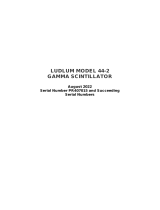 LUDLUM 44-2 User manual
LUDLUM 44-2 User manual
-
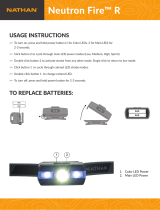 Nathan Fire R User manual
Nathan Fire R User manual
-
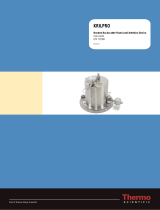 Thermo Fisher Scientific KRILPRO User guide
Thermo Fisher Scientific KRILPRO User guide
-
LUDLUM 44-183 Operating instructions
-
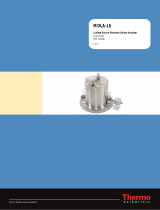 Thermo Fisher Scientific MOLA-LS User guide
Thermo Fisher Scientific MOLA-LS User guide
-
 Laurus Rad-id User manual
Laurus Rad-id User manual
-
Humboldt HS-5001EZ User manual
-
SUNSLICE Cyclotron User manual
-
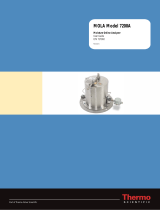 Thermo Fisher Scientific MOLA User guide
Thermo Fisher Scientific MOLA User guide
-
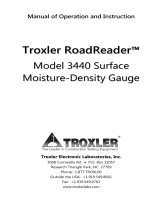 Troxler RoadReader 3430 Operation And Instruction Manual
Troxler RoadReader 3430 Operation And Instruction Manual























































